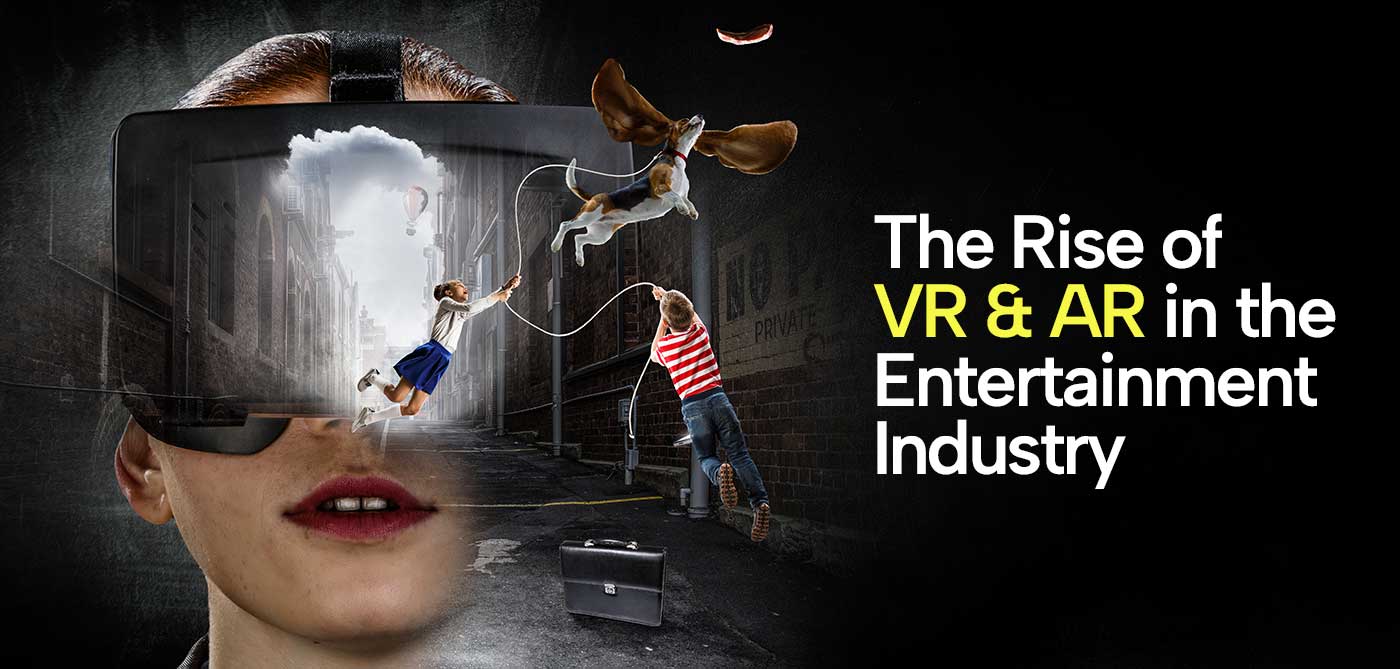
The Rise of VR and AR in the Entertainment Industry
There is no contention about the matter that the Animation and VFX industry has astonishingly changed the nature of the entertainment industry. Over the years we have seen the swift change brought by the visual effects industry. It reflects in both the entertainment and education sectors. Following the uninterrupted growth of the Visual Effects industry, to cope with this fast pace many films were forced to invent new realms of visual techniques. Additionally, top VFX academies were introduced in India to shape new FX artists in order to recreate and invent quality output. Along with the growth of VFX, Virtual Reality (VR)/Augmented Reality (AR) technology became popular too.
VFX in VR (Virtual Reality): A Close bond
The perfect immersive experience of virtual reality is already well-known to the general public. Undoubtedly, if the unique world it transports you to is not enticing enough, people will obviously lose interest to experience VR. The significance of visual effects resides here. It takes a certain amount of skill to completely transport users to a different universe. However, keeping them there is even more difficult to master! In light of this, it is safe to say that most of the best VR experiences utilize VFX technology in order to deliver the finest visual experience. These experiences might influence how we view entertainment in the future, in all likelihood.
Virtual Reality (VR) and Augmented Reality (AR) are rapidly changing the entertainment industry and expanding into various other fields. VR technology immerses users in a simulated environment, while AR overlays virtual elements onto the real world. VR and AR are rapidly expanding into various industries, providing users with new and exciting ways to experience and interact with the world around them.
This enhanced technology can applied in various fields such as:
Entertainment
VR and AR are transforming the entertainment industry, providing viewers with a more immersive and interactive experience. For instance, VR can transport users to virtual concerts. That allows them to experience the performance as if they were actually there. AR can used to enhance live performances by overlaying digital elements onto the stage or even onto the audience. In addition, VR and AR are revolutionizing gaming, allowing players to fully immerse themselves in the game world and interact with it in new ways.
Education
VR and AR are also transforming education. With VR, students can experience historical events, explore foreign countries, or learn about science in an immersive and engaging way. Students can visualise and interact with challenging subjects by using Augmented reality (AR) to get digital information over real-life subjects.
Healthcare
VR and AR are also being used in healthcare to improve patient outcomes. For example, VR can used to distract patients during painful procedures, reducing their anxiety and perception of pain. AR can used to assist surgeons during procedures by providing real-time information and guidance.
Retail
VR and AR are also transforming the retail industry. VR can used to create virtual showrooms, allowing customers to try on clothes and see how they look without having to physically be in a store. AR can used to provide customers with additional information about products, such as nutritional information or instructions for use.
What is Augmented Reality (AR)?
The entertainment sector may undergo a change, thanks to augmented reality (AR) technology. AR can significantly improve live performances, movies, and video games by superimposing digital data and images over the real world.
Live events are one of the most intriguing uses of augmented reality in entertainment. Imagine being able to view visual effects that enhance the performance on stage or song lyrics shown in front of you while you’re at a concert. Additionally, attendees might given interactive experiences with augmented reality by being able to take pictures with virtual representations of their favourite performers.
What is Virtual Reality? (VR)
A virtual reality (VR) environment provides the user with the feeling that they entirely immersed in their surroundings with visuals and objects that seem real. In order to experience this environment, a VR headset, helmet, or other pieces of equipment used. With virtual reality, we can improve our sports training to perform better and immerse ourselves in video games as if we were one of the characters. While it can appear quite far in the future, its beginnings are not as recent as we might believe. Over the years, software and technological advancements brought about a steady evolution in interface design and devices.
What is the difference between AR/VR?
Many people are still unfamiliar with virtual reality, despite the fact that this technology has been around for a long. Another common mistake frequently occurs while comprehending the difference between virtual reality and augmented reality.
The main difference between the two is that VR produces the world that we immerse ourselves in with the help of audio via headset. Everything we see is a product of an artificial environment that produced using images, sounds, etc. It is totally engrossing. However, in augmented reality (AR), different objects, images, and other things placed on top of our real-world environment. The requirement of wearing a headset may not be necessary in all cases.
The Role of VR/AR Technology in the Film Industry
The VR movie industry has been developing and combining movies, games, theatres, etc. Nowadays, many video games advance the plot by using cinematic language. The future of VR movies will be to combine games and movies to create immersive dramas with a high degree of audience interaction. Users can already get a better experience using existing VR video production technology and hardware playback devices, allowing them to further engage with the movies. A novel viewing experience is offered to customers thanks to the widespread use of panoramic video services offered by head-mounted displays or smartphones and the quick development of virtual reality technologies.
The blending of VR with film is still in the exploratory phase as of now. When watching films, viewers don head-mounted devices, which give them a strong sense of immersion as if they were in the real world. In a VR setting, users can take precise activities and see their surroundings realistically through their own eyes. When used in movies, virtual reality technology can imitate sensory experiences like sight, hearing, and touch. It allows the viewers to become fully immersed in a virtual world. This can interpreted by filmmakers as a tactic that enables the audience to become completely engrossed in the narrative and emotionally invested in the characters.
We can have the impression that this is a real scene and all gratitude goes to virtual reality technology. VR filmmaking is certainly the most effective way to achieve this if the movie is meant to be an empathy-building tool. The highly immersive environment that VR cinema generates to deliver a realistic experience is the basis of its appeal.
Conclusion
The transition from silent to sound, from black and white to color, or from 2D to 3D. May not be the only technological progress in the film that VR/AR represents. These new “realities” are in a fragile stage and will usher in a new era of entertainment and communication. Like the transition from painting to sculpture or from photography to film, it might be more of an artistic leap. The movie suddenly transitions from a two-dimensional screen into a three-dimensional environment. The inability of VR/AR movies to become widely accepted in the near future. And the possible reason might due to the need for a more developed model in terms of narrative logic and camera language. And also, the fact that there is still a lacking of VR/AR filming equipment. That can match the standards of the international level.

